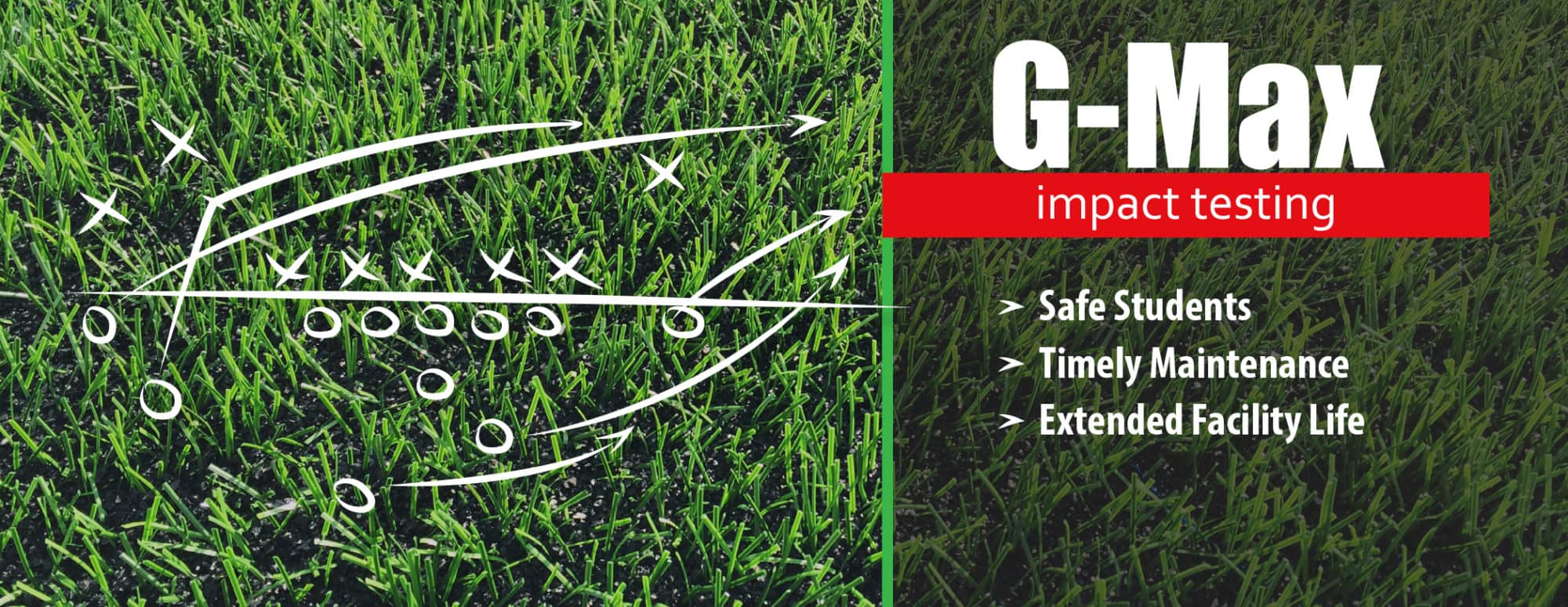Intro to G-max testing:
G-max testing or impact testing measures the shock absorption properties of synthetic turf and natural grass fields.
Why you care:
It’s all about safety. The harder a surface is the greater amount of energy absorbed by the human body. This means more frequent injuries and an increased chance of traumatic injuries, like concussions.
- Owner or manager: You have an obligation to provide a safe facility. Where standards exist, you should insure that your facility is in compliance and that you and your organization aren’t exposed to unnecessary liability if an injury occurs.
- Athletic Director, Parent or Player: All are uniquely invested to the safety of the athlete. It is in everyone’s best interest to insure the facilities are within safe play parameters and properly maintained.
- Facility Director: A well maintained facility is a long lasting facility. The g-max can also give the facility a good idea how the infill is performing and weather more / additional / different maintenance is needed.
How frequently to test?
Regular g-max testing is important because a field is not static. Synthetic turf fields get harder as they age. This is a result of many variables not limited to: construction method, material used, maintenance, amount of play and environmental conditions. Because of this, regular G-max testing should occur 1-2 times a year for high school level competition.
NOTE: The NFL to fight/research concussions conducts a test prior to every game, on every field.
Even more information:
The higher the G-max value, the harder the surface is. G-max is the fundamental tool of athletic field safety testing. It is also useful in assessing the playability of a field.
Synthetic turf G-max tests require that at every test location (10 locations) the score be below 200g’s (when measured to ASTM F355-A and ASTM Specification F 1936). At each location a 20 lb. missile is dropped three times. The score is the average of the second and third drop.
- The testing company should not be the manufacture/installer (conflict of interest)
- Testing equipment should be in compliance with ASTM Standard F355-Procedure A (F355-A) which requires a cylindrical missile with a circular, flat, metal impacting surface. The weight of the missile must be 20lbs (+/- 0.11 lb).
- The accelerometer used in the test equipment should have a current calibration certificate, and the calibration should be NIST traceable.
- Procedures used to test an artificial field, plus the number and location of individual test points, should conform to ASTM Specification F1936.

